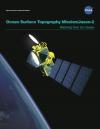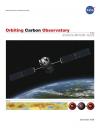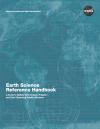- Home
- Missions
- Data
- Communications
- People
- The Earth Observer Newsletter
Recent Imagery
You will be directed to the NASA Visible Earth webpage when you select Images by Mission below, or click on the images at right that are randomly generated to represent four out of all possible topics.
You are here
Science Communication Material
NASA's Earth Observing System provides a variety of materials available for download. Feel free to choose a category below:
- Brochures
- Postcards
- Posters
- Science Writers’ Guide
- Mission Brochures
- Fact Sheets
- Calendars
- Booklets
- Lithographs
- Reference and Data Products Handbooks
- iBooks
- Activities
 |
Ocean Surface Topography Mission/Jason-2 The Ocean Surface Topography Mission (OSTM)/Jason-2 spacecraft advances our understanding of ocean circulation and will improve our ability to forecast climate events and measure global sea-level change. The instruments on board are designed to map ocean surface topography to provide information on ocean wave heights, sea surface topography, tides, and water vapor. OSTM/Jason-2 continues the tasks of the Jason-1 mission. This is related to the following mission(s): This publication appears in: |
 |
Orbiting Carbon Observatory The Orbiting Carbon Observatory is the latest mission in NASA’s ongoing study of the global carbon cycle. It is the first spacecraft dedicated to studying atmospheric carbon dioxide, the most significant human-produced greenhouse gas and the principal human-produced driver of climate change. This is related to the following mission(s): This publication appears in: |
 |
Orbiting Carbon Observatory (OCO) The Orbiting Carbon Observatory (OCO) is a new mission in NASA’s ongoing study of the global carbon cycle. OCO will make the first space-based measurements of atmospheric carbon dioxide (CO2) with the precision, resolution, and coverage needed to accurately map the geographic distribution of CO2 sources and sinks. This information will be used to improve our understanding of the processes that control atmospheric concentrations of this potent greenhouse gas and will lead to improved predictions of future climate. This is related to the following mission(s): This publication appears in: |
 |
2007 NASA Science Mission Directorate Calendar |
 |
Observing Air Quality from Space Compare three major air pollutants, their sources, and how they were distributed across the globe in 2005: nitrogen dioxide, tropospheric ozone, and particulate matter. This publication appears in: |
 |
Sea Ice This card introduces the subject of the seasonal cycles of sea ice in the Arctic and Antarctic polar climate systems. This publication appears in: |
 |
2006 Earth Science Reference Handbook Revised May 2006: The Earth Science Reference Handbook provides a guide to the satellite missions and other elements of NASA's Earth science program. This volume updates the 1999 EOS Reference Handbook, now that the major missions of the Earth Observing System (EOS) have been launched and are transmitting data, and broadens the coverage to include not just EOS but also additional NASA Earth science missions. This publication appears in: |
 |
Earth by Day, Earth by Night See where urban populations of the developed world are concentrated around the globe. Compare Earth’s daytime map of the continents with a compelling global view of Earth’s city lights at night. This publication appears in: |
 |
NASA's Science Mission Directorate NASA determines Earth’s place in the universe. This publication appears in: |
 |
CALIPSO/CloudSat/GRACE This publication is intended to be a one-stop resource for science writers and reporters who want to write about any of these three missions. For each satellite, the guide includes a quick reference sheet, Q&A, basics on the science of each mission, public affairs and scientist contact information, explanations of the satellites and their instruments, Web sites and other resources. This is related to the following mission(s):
This publication appears in:
|
